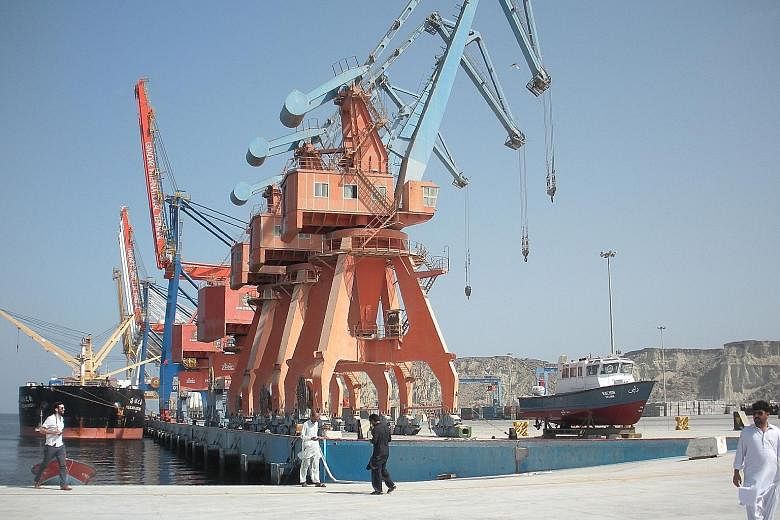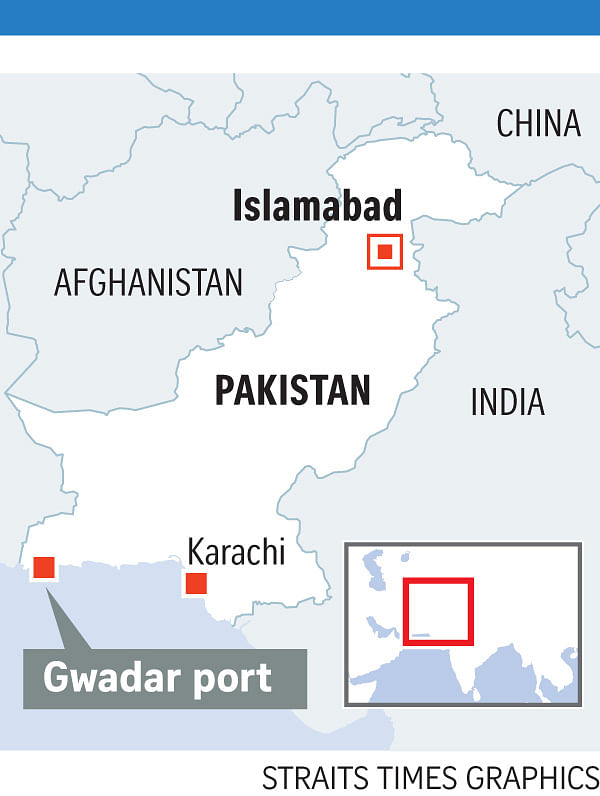GWADAR • Remote and impoverished, Pakistan's Gwadar port at first glance seems an unlikely crown jewel in a multi-billion-dollar development project with China aimed at constructing a 21st-century Silk Road.
Situated on a barren peninsula in the Arabian Sea, Gwadar, or the "gate of the wind", owes its fortuitous selection as Pakistan's next economic hub to its strategic location near the Strait of Hormuz.
The city is set to become the bridgehead for the China-Pakistan Economic Corridor (CPEC), a US$54 billion (S$73.5 billion) project launched in 2013 linking western China to the Indian Ocean via Pakistan. The corridor is one of the largest projects in Beijing's One Belt, One Road initiative, comprising a network of roads and sea routes involving 65 countries.
The Chinese-financed initiative aims to connect the country with Africa, Asia and Europe through a vast network of ports, railways, roads and industrial parks.
But for Pakistan, participating in the project presents an enormous challenge in a country plagued by weak institutions, endemic corruption and a range of insurgencies in areas slated to host the corridor.
"This port is going to help Pakistan make linkages with neighbouring countries. The entire nation will be getting benefits out of Gwadar," Mr Dostain Khan Jamaldini, chairman of the Gwadar Port Authority, told reporters. But "the first beneficiaries of this port will be the people of Gwadar".
The subject of economic dividends is extremely sensitive in resource-rich Balochistan - one of Pakistan's poorest and most violent provinces, where separatist insurgencies have been waged for decades.
Since the beginning of the project, militants have repeatedly attacked construction sites and targeted Chinese workers.
The project includes the country's first deep-water port, a free-trade zone and 50km of dock space.
"Gwadar port is not Chinese, our strong partner is Chinese and we appreciate their boldness," said Mr Jamaldini. "They came to Gwadar when nobody was accepting the idea to come and visit."
In Gwadar city, economic activity spurred by CPEC remains limited. A lone freighter was anchored in the port during Agence France-Presse's recent visit. Only three to four arrive every month, according to the port authorities. The expressway leading to the site is unfinished.
About 300 Chinese people working on various projects live in prefabricated houses on the port - coined Chinatown - but they only venture out with a security escort.
The city itself, with a population of about 100,000 that is projected by one estimate to jump tenfold by 2050, has relied on fishing and the artisanal construction of boats for generations.
For some, the port project is a chance to right the wrongs of past subjugation. "It will be unfortunate if the local Baloch do not benefit... that would cause an increase in the several decades-long sense of deprivation," said Mr Abdullah Usman, 47, a social worker.
AGENCE FRANCE-PRESSE


